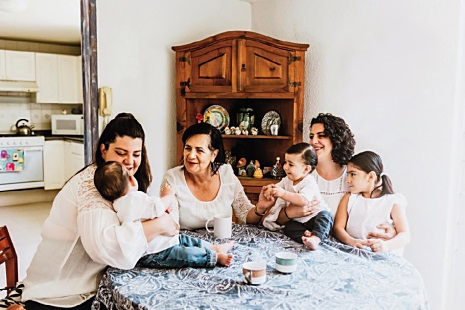WHAT'S HAPPENING
limited flexibility, the report found. Less pay also means there are few child care options – the average annual cost of child care in the United States is nearly $11,000, which is out of reach for many Latinas. Without access to care, Latinas see their lifetime earnings slashed by 19 percent, the most of any racial group. That figure is 8 percent for Black mothers, 15 percent for White mothers and 14 percent for other groups, which includes Asian American, Pacific Islander and Native Hawaiian (AAPI) mothers. Small sample sizes make it difficult to separate out data for certain groups, including AAPI women.

DEGREES OF LOSS: The loss in lifetime earnings is higher for mothers who are college-educated, averaging $420,000 in lost wages and retirement savings over their lifetimes.
Black women, who are historically the group of women with the highest labor force participation rate, are the least likely to scale back their employment for caregiving. And so while that amounts to less lifetime lost earnings – $149,000 on average, the lowest of any group – that signals a scarcity of choice rather than economic prosperity.
"It's more of a story about how Black mothers can't afford to work less due to things like the wage gap, lower levels of household wealth, all kinds of other systemic inequalities that lead to worse economic outcomes for Black women and for Black families," said SJ Glynn, senior adviser for the Women's Bureau. "Even these small reductions can have a really problematic impact when it comes to immediate economic security, and then longer-term retirement security."
"Since the pandemic, renewed focus has been put on reducing child care costs for families and recognizing the caregiving roles that women play."
It’s likely that care-related employment losses contribute to high poverty rates for elderly Black and Latinx adults, the report found.
Since the pandemic, renewed focus has been put on reducing child care costs for families and recognizing the caregiving roles that women play. The first women's recession occurred during the pandemic specifically because, due to the closure of child care centers, women left their jobs to care for children full-time.
Since then, the country has tried to pass a comprehensive child care plan that would overhaul the industry, and though that plan failed, other long-stalled legislation has passed. A one-time expansion of the child tax credit passed in 2021 after decades of inactivity. The Pregnant Workers Fairness Act and the PUMP Act, two pieces of legislation designed to protect mothers at work, also passed years after they were first introduced. And earlier this year, President Joe Biden built in a first-of-its-kind child care requirement for businesses seeking large federal subsidies and signed a slate of executive orders aimed at lowering the cost of child care and elder care.
And yet, quality child care remains inaccessible for most parents. Women still see a wage gap, earning 77 cents compared to every $1 earned by White men, and women of color are still consistently the furthest behind. All of those are historic problems that, without targeted legislation, will continue to hurt the economy, ChunHoon said.
"Gender and racial inequality combined with our nation's lack of care infrastructure and work/family policies… harms women, not just in the short term, but in the medium and in the long-term," she said.•
ABOUT THE AUTHOR:
Chabeli Carrazana the economy reporter for The 19th. She was previously a business reporter in Florida covering the tourism industry for the Miami Herald and the space industry for the Orlando Sentinel, as well as labor issues and workers rights. In 2021, she was a national Livingston Award finalist for her coverage of the women’s recession. Chabeli was born in Cuba and speaks fluent Spanish. Visit https://19thnews.org to read more.
